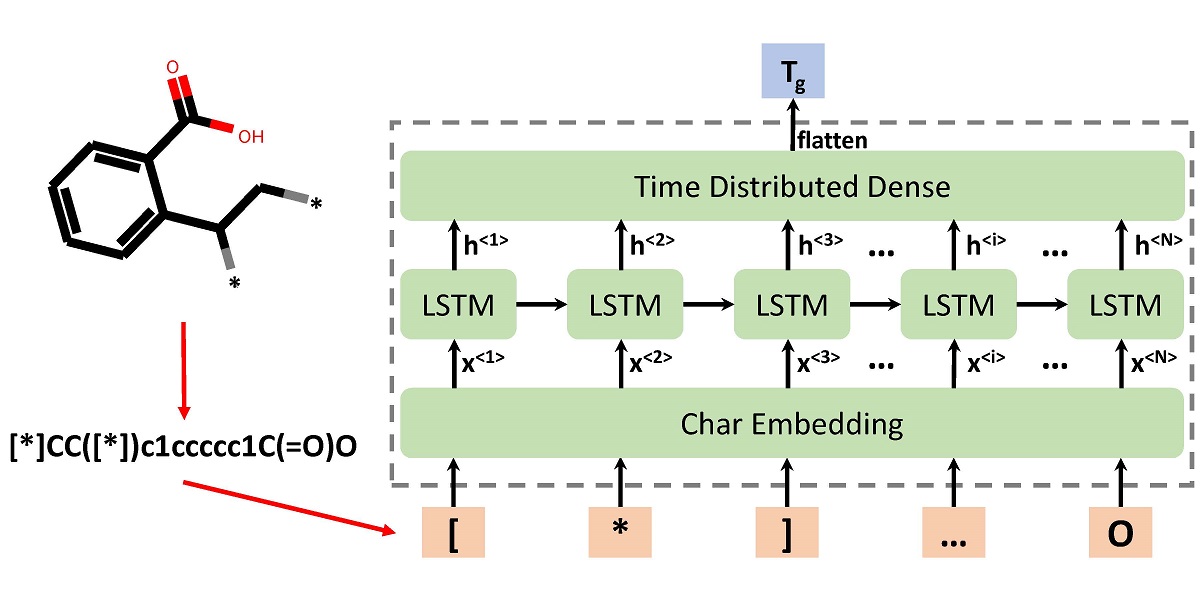We propose a chemical language processing model to predict polymers’ glass transition temperature (Tg) through a polymer language (SMILES, Simplified Molecular Input Line Entry System) embedding and recurrent neural network. This model only receives the SMILES strings of polymer’s repeat units as inputs and considers the SMILES strings as sequential data at the character level. Using this method, there is no need to calculate any additional molecular descriptors or fingerprints of polymers, and thereby, being very computationally efficient and simple. More importantly, it avoids the difficulties to generate molecular descriptors for repeat units containing polymerization point `*’. Results show that the trained model demonstrates reasonable prediction accuracy on unseen polymer’s Tg. Besides, this model is further applied for high-throughput screening on an unlabeled polymer database to identify high-temperature polymers that are desired for applications in extreme environments. Our work demonstrates that the SMILES strings of polymer’s repeat units can be used as an effective feature representation to develop a chemical language processing model for predictions of Tg. The framework of this model is general and can be used to construct structure-property relationships for other polymer’s properties.

